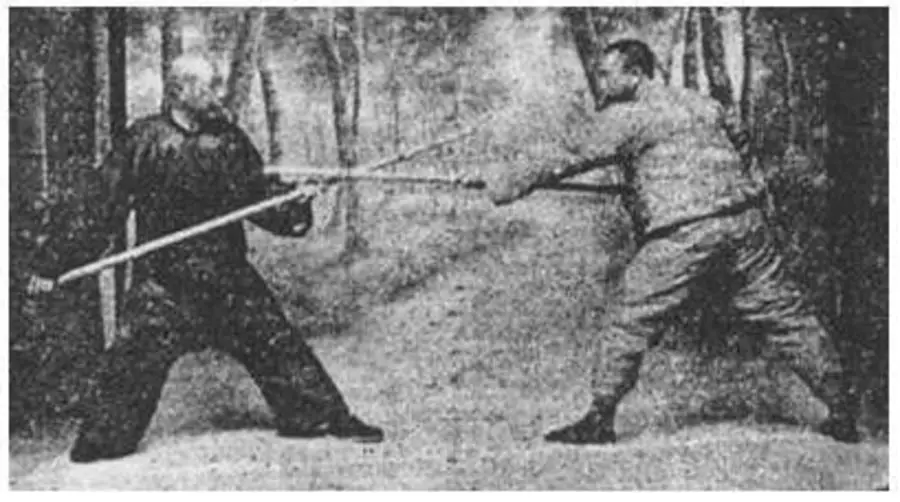One of the biggest questions someone asks when they get really excited about starting tai chi is: “Which tai chi styles should I learn?” And a close second: “Which tai chi style is the best?” What I think they are saying is: “I have heard of all the benefits of tai chi and am ready to invest my time and money, what should I do?”
The problem is made more difficult because asking a current tai chi practitioner or searching online is heavily influenced by what style a person already does. So, let’s answer that question here so you can evaluate your class or a new one you are considering.
There are five main tai chi styles named after their founding families (Chen, Yang, Wu, Wu Hao, and Sun) and three additional popular styles practiced throughout the world (Zhao Bao, Cheng Man Ching, and Wudang). All tai chi styles share the same initial lineage and branch off as their founders advanced the art in their own unique way.
If you are new to tai chi, you are going to be relieved because the answer is more simple than you think. If you are already practicing, give me a few minutes here. I promise I will not be running your tai chi style into the ground while I share the exhausting benefits of mine (cue the Chinese music). On the contrary, I will give you the information you need to get more people practicing.
This is the central article linking to summaries of the eight primary tai chi styles. What I want to get across her is, I made advances in my practice when I begin learning about, learning from, and celebrating the lineage of all the main tai chi styles rather than thinking that one tai chi style was the best. Learning about the masters, incredible times in history, philosophy, and martial advancement will keep you interested in tai chi and busy for decades!

The Arguments For or Against a Certain Tai Chi Style
Let’s begin by refuting the arguments and then we will conclude with a summary of all of the main tai chi styles:
One Tai Chi Style is Better Than Another: Each style has gained fame and millions of followers for creating real value in the form of writings, forms, instruction, and future teachers. Creating value is the only way for an activity to continue to exist. Therefore, the longevity of each existing style proves its merit.
One Tai Chi Master was the Best: Most masters did not live at the same time. Those that did live at the same time were each other’s colleagues, teachers, and students. There are few records of competition between any great practitioners. You would have to create a tai chi version of fantasy football to get to the bottom of this.
A Certain Tai Chi Style is the Most Popular: There is some truth to this but the first question is popular where? Yang developed out of Chen, but Yang is by far the most popular style. It has benefited from being supported by the political elite, and being in the city that sent out most of the early immigrants from China. Chen Village contrarily, is considered to be in the countryside and the region did not receive favorable treatment in the past from regimes. It was even seen as a threat during certain political time periods. So popularity has more geographical and political implications than it has stylistic proof.
What do I risk by believing that any one tai chi style is the best?
You alienate yourself from an already small number of participants. Everyone who has made any tangible progress in tai chi has interacted with other practitioners.
What do I gain by seeing all these separate efforts as contributing to the same development?
You have access to everyone in your community that practices and you find value in all that has been written on tai chi.
So what do the tai chi styles have in common?
What don’t they? For every difference each type of tai chi has you could list 100 similarities. That is to say that all tai chi styles are:
- Working to develop a connection between internal power and external movement
- Acting in accordance with nature and not opposed
- Based on and adding to 2000 years of knowledge
What you see as stylistic differences are a group’s take on certain concepts that they think are important and that they tend to focus in. By taking a moment to see what each master developed, you get a greater picture of different ways that you can improve your form.
Five Main Tai Chi Styles (Families) Are Recognized in China and Several Popular Additional Lineages Exist
There are five main tai chi styles based on family names, but also dozens of lesser known types of tai chi. I want to give you the general overview here and then you can dive into each tai chi style based on what interests you the most. Each of the links below takes you to an article that is about a 10 minute read and packed with super cool videos. For inspiration sake, I suggest you make it through them all!
As an aside, this is not an exhaustive list and I don’t mean to insult any style that is not mentioned here. These are the main types of tai chi practiced throughout the world. All other styles are related to or derivations of the styles below.
Yang Style
Yang Style was founded by Yang Lu ch’an in the 19th Century. The proliferation of tai chi can be attributed to him as the popularity was spread after he was hired to teach tai chi to the royal family. His understanding of tai chi led to the development of the 108 posture form and his teachings directly influenced three other main types of tai chi. It is characterized by big and open movements and is the most popular form of tai chi studied today.
Chen Style
Developed across several generations of Chen village, Chen Tai Chi is the oldest form and parent to other types of tai chi. Chen Wangting codified the practices of tai chi into main forms (frames) which included a 108 long form and an aggressive second frame – Cannon Fist. Chen Tai Chi entered the world scene as Chen Zaopei and his uncle Chen Fake moved to Beijing in 1928 and their tai chi was seen as being a radical departure from what was popular at the time. Several challenges resulted in defeats for their opponents and cemented Chen tai chi’s legacy. Currently, several 19th and 20th generation family members travel and teach today.
Wu Family Style
Founded by Wu Ch’uan-yu, a military officer of the forbidden city, Wu Style is based on Yang Tai Chi but is shorter and more compact. The compactness of the style is intended to build up and retain energy rather than allowing the energy to expand into extended arms and legs. The stance is equally tight with a limited range of kicks and steps.
Wu/Hao Style
Founded by Wu Yuxiang, Wu Hao founders are credited with creating and preserving early texts on tai chi. The art is recognizable for high short stances and smaller movements. Wu Yuxiang studied under Yang and Chen masters and synthesized his understandings of their teachings into a new style. By the 1920s tai chi was gaining popularity and the Hao family de-emphasized broad and difficult movements and made tai chi accessible to large numbers of students.
Sun Style
Sun Style Tai Chi Chu’an was developed by Sun Lutang, a master of two other internal styles, Xing Yi Quan and Ba Gua Zhang. Sun style incorporates the movements of the other two arts. For example, as one foot moves, the other follows in the same direction (Xing Yi). Small circular movements of Ba Gua are also found in the hand movements.
Zhaobao Style
Zhaobao Style is a lesser known type of tai chi that consists of a large (108 moves) and small (75 moves) frame practiced at different heights. It is an offshoot of Chen tai chi and is named after the village where it was practiced.
Cheng Man Ch‘ing Style
The Cheng Man Ch ‘ing form was brought to the west in the 1960s and is popular in Taiwan, America, Europe and parts of South America such as Argentina.
Cheng Man-Ch’ing studied medicine, calligraphy, painting, and poetry and began studying Yang Style in Beijing in 1932. He taught tai chi at the military academy and simplified the Yang 108 form into 37 moves. He fled China to Taiwan after the Communist takeover and moved to the United States in 1964. He established himself as a great teacher and produced many distinguished students.
Wudang Style Tai Chi
Wudang style originates from the Taoist Monasteries in the Wudang Mountains. It traces its lineage back to the original founder of tai chi Zhang Sanfeng. It is the style that is most closely tied to philosophy and also is unique in that practitioners also typically practice Kung Fu.

Which Style of Tai Chi Should I Learn?
The answer should hopefully be clearer by now. All styles have merit. What is more important is finding good instruction, that is an acceptable distance from you, with similar goals, and a community you feel comfortable in.
Tai chi development is based on 1) continual practice, 2) positive interactions with other practitioners, and 3) access to materials and teachers that are working towards internal development. So choose a type of tai chi based on your schedule and commute to keep you practicing. Choose a class that is putting its effort into positive development and sharing information and not on conceit, comparison, or justifying why they are great. The tai chi style you should learn is the one that has similar goals as you do such as health, martial application, or philosophy. Also, focus on why you are doing something and not the minor stylistic differences.
How to Get Started with Tai Chi Classes in Your Area
Tai chi classes vary WIDELY! Classes can be fast, slow, easy, rigorous. Classes and schools can have completely different goals. These can include: learning many forms quickly, learning forms slowly, learning only one form, competitions. They can have a focus on health, martial application, or both.
The take home message is that if you decide to practice tai chi, immediately book 1-4 different classes at different schools. Don’t attend one class and assume that all tai chi classes are the same. Maybe you will get lucky and find the perfect fit of people, style, and speed. But maybe not!
I made this mistake when I started studying tai chi and I hope you can avoid it. I attended a class for a really long time assuming I was doing some good tai chi. I met some Chen style practitioners in a park and soon realized that my teacher was a first-rate herbalist but that his tai chi classes were just paying the bills and introducing people to his medicine. Nothing wrong with that I suppose and I made some really great friends. I just wanted what tai chi promised and wanted to progress.
Should I pay to take a tai chi class or sign up right away?
I support tai chi instructors who are trying to make a living off the art and charge their students. However, with so much variety it is hard to know which class to take. Many schools allow you to join the first class for free. If not, ask. Many ask for a single payment of $10-$25. Also totally fair. If they want automatic payments that you can cancel within 30 days or want you to buy a uniform to attend the first class, I would keep looking.
I also support paying for online courses and these don’t have to be expensive. There is a very strong opinion held by nearly every practitioner that in-person teaching is better. I totally agree. But, if based on your schedule or where you life, if you are choosing between an online video or not doing tai chi at all, you should look into an online option. Here’s a few of our favorites at different price points. The way the teaching is organized and great camera angles are much better than something you could string together from online videos.
How do I know if a tai chi teacher is good or if the class is good?
Again, the easy answer is just keep attending. It is pretty easy to tell if you have found a community you enjoy spending time with. Also, you should just naturally feel better from doing tai chi. Here are some pointers to judge a tai chi class:
Five Questions to Determine if a Tai Chi Teacher or Class is Good
- Do you feel better after class than you did when you started? We are not talking about Olympic-level change here. Are you more stretched out, warmer, more awake, more calm? Has your mood improved?
- Does soreness go away relatively quickly? You will get sore by attending the weapons classes we hold. But generally after the next day you don’t feel a thing. You want a little soreness because it means you are improving your posture and leg strength. You should not feel pain or permanently aggravate old injuries.
- How do your joints feel? This is a problem that all current tai chi instructors have to own because of decades of bad tai chi instructors letting students get injured. Your joints should be feel warm and “challenged” but you should not get injured. The classic example is instructors not correcting students when they torque their knee with weight on that leg. Also, not having a class warm-up routine that includes spiraling of the joints.
- Do you like and look like the people in the class? Let’s face it, we are busy people. You should look forward to seeing your classmates, not be afraid of them. The social and communal aspect of studying a martial art is one of the greatest perks. Secondly, there should be people your age and gender in the class. If they look like you they probably move like you and the curriculum with support that.
- Are you learning and progressing? We all progress differently. Over a short time frame, you should notice that you are benefitting mentally and physically from the class. But tai chi is also a tool you are adding to your toolbox to use the rest of your life. As you move through the weeks, you should be able to perform more on your own. You don’t want to be in a class that covers only one move a month. Nor do you want learn an entire form in a day and move on to something else. Keep in mind that this last point is also on you. Students progress when they practice outside of class. Even a little!
So, Which Tai Chi Style Should You Learn?
If you are lucky enough to live in a city with options, take in the above criteria along with commute, time, and budget. Commute and cost are the top two reasons most students stop attending class.
If you are lucky enough to be in a town with any tai chi, use the above criteria to judge if it is a good fit for you. You may also want to explore other martial arts. I know! Heresy, right? Many small towns have 1-3 martial arts schools that are culturally very different. There are so many benefits to studying the martial arts or yoga that it is worth while for you to investigate. I helped a student in rural Wisconsin look for a tai chi school. Ultimately, there was a great Judo community with a knowledgeable instructor and that was the best fit for him. No, it wasn’t tai chi. But, he was on the path to addressing his health, stress, and social needs holistically.
If you have nothing nearby, you are lucky enough to have the internet. You can attend workshops infrequently to get jump started or take classes online. The criteria is still the same: Do you feel better mentally, emotionally, and physically after class, than you did when you began class?
And read more here: How to Choose a Tai Chi Class




Great article! I am always telling my students that there is one right way, but infinite ways to get there. We should not be obsessed with the destination, but enjoy the ride. No mention of Liuhebafa? Just curious.
No reason I excluded it. I kept to the “main” styles to make the point but to be sure there are dozens of additional styles and offshoots. The main point I was making was to take into consideration what is available, who you will be practicing with, and how easily you can access materials and corrections. The development can happen anywhere. Thanks for the comment!
I understand! Thank you! I agree with you 100% and echo your thoughts about this.